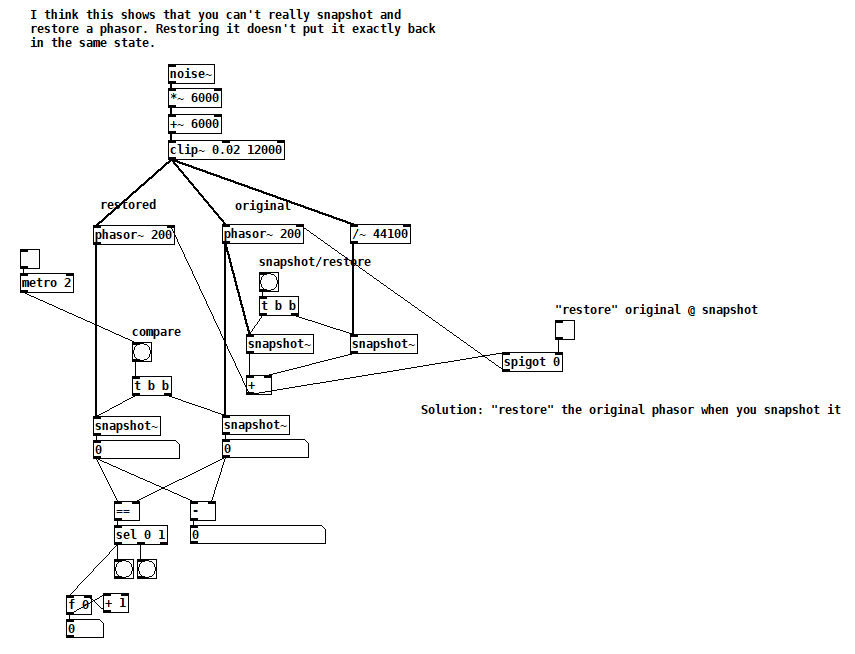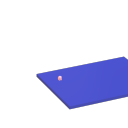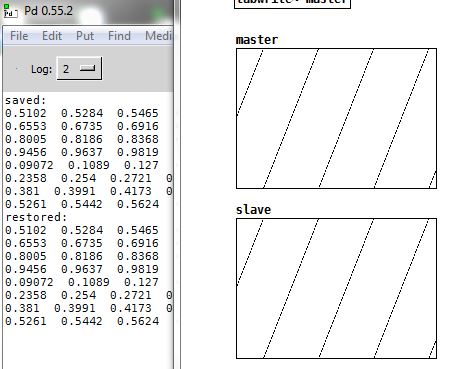Suppose you want to capture the state of a [phasor~] in order to return to it later, i.e. you want it to output the exact same sequence of samples as it did from the moment you captured its state. As a first attempt, you might [snapshot~] the [phasor~]'s output and then send that value to the [phasor~]'s right inlet sometime later to restore it. Of course you also want to capture the state of its frequency inlet (and record it if it's changing). But there are two subtleties to consider. Firstly, the value you write to the right inlet is the next value that the [phasor~] will output, but when you [snapshot~]ed it, the next value it output was a little greater, greater by the amount of the last frequency divided by the current sample rate. So really, this greater value (call it "snap++") is the one you should be writing to the right inlet.
The second subtlety has to do with the limits of Pd's single precision floats. Internally, [phasor~] is accumulating into a double precision float, so in a way, the right inlet overwrites the state of the phasor with something that can only approximate its state. The only solution I could find is to immediately write snap++ to the right inlet of the running [phasor~], so that the current and all future runs output the exact same sequence of samples. This might not be acceptable in your application if you are reliant on [phasor~]'s double precision accumulation because you'd be disrupting it in exchange for repeatability.
Here's a test patch that demonstrates the issue:
phasor snapshot restore test.pd










